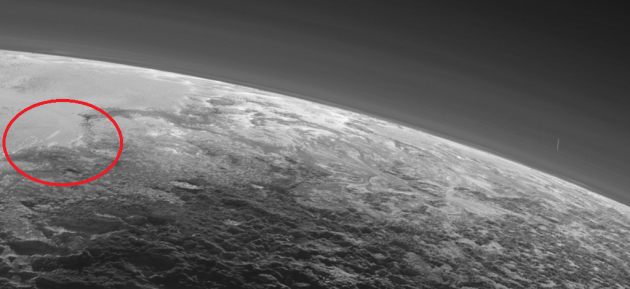
Even before NASA’s New Horizons probe flew past Pluto, scientists thought they might see clouds in its thin atmosphere – and now a couple of pictures suggest they were spotted.
One of the pictures from last July’s flyby, published by New Scientist today, shows what appears to be a light-colored wisp amid the dwarf planet’s haze.
Michael Buckley, a spokesman for Johns Hopkins University Applied Physics Laboratory, told GeekWire that the science team is still discussing the data.
“What the team can say at this point is Pluto’s atmosphere, including hazes, is complex, and scientists continue to analyze and discuss incoming data as part of the normal science process,” Buckley said in an email. “As always, we’ll post a feature just as soon as we have more analysis and consensus.”

New Scientist quoted from what it said were emails that were distributed among team members in a mission discussion group. It said one of the emails was sent last September, and pointed to wispy streaks in an image that also showed discontinuities in the layers of haze in Pluto’s atmosphere.
The subject of clouds reportedly came up again this week in the discussion group, New Scientist said.
For months, New Horizons’ scientists have been studying the haze in Pluto’s atmosphere, which contains nitrogen, methane, carbon monoxide and organic particulates. Before last year’s flyby, scientists theorized that Pluto’s clouds might contain “baby snowflakes” made of those constituents.
This week, the New Horizons team laid out additional evidence for the presence of methane frost on Pluto’s mountaintops. Such frost could arguably condense out of Plutonian clouds.



